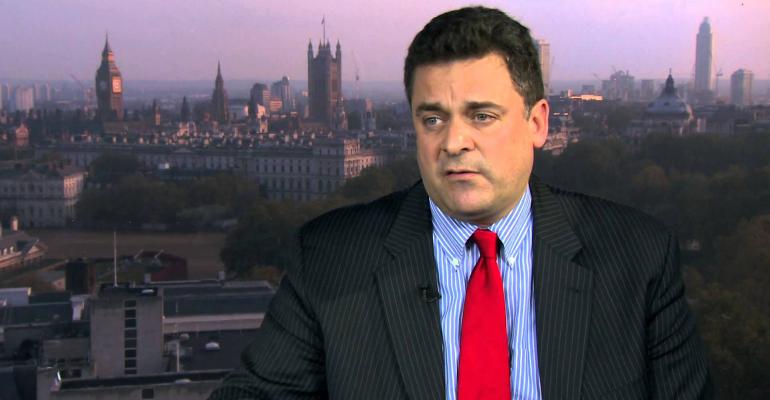As the investors’ rush into exchange traded funds continues unabated, Luciano Siracusano, chief investment strategist at WisdomTree, sees an interesting trend. Young investors are skipping mutual funds and moving directly to ETFs. He compares it to developing economies that are forgoing landlines and jumping into smartphones instead.
Siracusano says that one of the most important issues for U.S. ETF investors in the coming years will be currency fluctuations. How and when should funds hedge their exposures? He lauds financial advisors for their ability to steer clients through market crises, but says they need to learn more about all the ETF choices available.
Wealthmanagement.com: What are the most overlooked benefits of ETFs?
Luciano Siracusano: ETFs give you a pure exposure to an asset class. So they can be used precisely for global asset allocation. For example, if you’re trying to get exposure to U.S. fixed income, the Barclays Aggregate Bond Index has thousands of bonds, better yet you can get exposure to the whole universe in one ETF at a reasonable price.
You can get exposure to gold, international small-cap stocks, the Indian equity market. There’s typically an ETF matching each of the major indices. So you can create a balanced portfolio, and you don’t have to worry about a fund manager leaving.
WM: What are the biggest risks of ETFs?
LS: The [market] risks are the same you’d have with mutual funds or stocks. When it comes to structure, you need to be mindful that ETFs trade on exchanges. So anything impacting an exchange can impact an ETF. But if you’re holding for the long term, things that happen intraday get washed away in time.
WM: What about the concern that at some point the huge inflow of money to ETFs could reverse, exacerbating market declines and fueling volatility?
LS: That risk is no different than people exiting mutual funds or hedge funds. ETFs still have a fraction of the assets of mutual funds. ETFs in the U.S. are at nearly $3 trillion, compared with $11 trillion to $12 trillion for mutual funds. We aren’t at a point where passive investments can dominate the market.
WM: What do you think of the talk that ETFs are being misused by some investors as short-term trading vehicles?
LS: There is a risk of people trading ETFs too much. If you’re trading a lot, it’s difficult over time to achieve market return. We advise clients to take a long-term approach. That way you’re not really impacted by what’s happening on an exchange. The structure of ETFs avail to short-term trading, but also to long-term trading.
WM: What are the most important recent developments in the ETF space?
LS: There’s the emergence of modern alpha: a third option between traditional active managers and passive managers. It’s factor and smart beta funds. They combine the best principles of both styles. They may target, value, quality or small-cap stocks just like an active manager. But like index funds, it’s a rules-based exposure that doesn’t require much human judgement. We think that’s the future of investing, and we’re in the middle of that revolution.
WM: Any other interesting developments?
LS: [As the inflows to ETF continue to surge,] young investors aren’t really engaging mutual funds at all. It’s comparable to emerging economies skipping landlines and going directly to 4G smartphone technology.
WM: What kind of changes do you see coming in the future?
LS: There will be a lot more innovation, particularly in the fixed income and alternative investment space. Technology will become more important. There will be digital practices without paperwork. It will feel like a 21st century way of delivering services. Digital tools will become more important and provide processes for allocation around the world.
WM: Can you give examples of what we might look for in fixed income and alternative investments?
LS: We launched an ETF three years ago that’s an enhanced-yield version of the Barclays Aggregate Index. On the alternative side, there will probably be more products like long-short funds and option-writing strategies, such as puts on the S&P 500 Index. The products will help clients manage volatility and sometimes give alternative sources of income.
Managing foreign currency risk for U.S.-base investors will become more important. [The dollar rallied for four years before declining this year.] A dollar move can last six or seven years and then go the other way. You must be mindful of the role currency plays in foreign equity exposure.
We have two ways of handling the risk. One hedges currency exposure 100 percent of the time. Recently, we’ve added dynamic hedging. A decision is made at the end of each month based on the rules used by the fund whether to hedge. Individual investors and advisors often don’t feel comfortable making decisions on currency hedging themselves.
WM: What do financial advisers do well in guiding their clients on ETF investments, and where could they improve?
LS: Advisors do well in giving perspective on how to invest for a full market cycle. They’re particularly helpful during a crisis, helping clients to stay invested for the long term and take advantage of buying opportunities.
Where advisors need to improve is understanding all the choices available. Not all ETFs are created equal. There are products out there to help them during market drawdowns. There are specific ETFs designed to help protect capital during market declines, such as low volatility and dividend-weighted strategies. There are ETFs that can provide real relative alpha during market declines.
There are tools allowing you to run stress tests. You can bring down your costs or increase your yield just by engaging with digital tools. We’ve created a whole suite for advisors to load up their portfolios on our website. An algorithm will analyze a portfolio and spit out a suggestion about where they may be able to improve.





